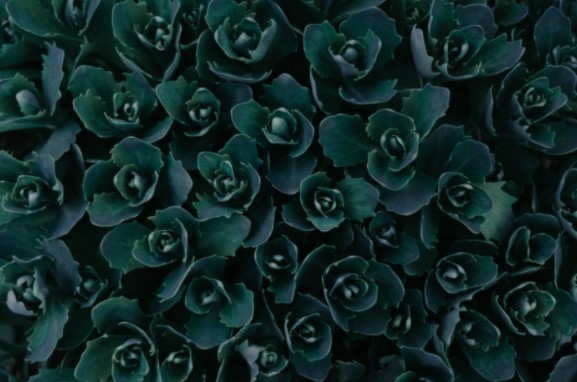
Garden Landscape Design: The Ultimate Guide (2020)
Garden landscaping is the process of drawing out the full essence of gardening. It makes your garden look more aesthetic than usual. Garden landscape design is the art of beautifying a stretch of land to make it look picture perfect.
This kind of gardening can be scary for newcomers. Not all of us can come up with a great garden landscape design. Connecting with nature in a city filled with skyscrapers isn’t easy.
Even if you’re an expert, it can still be challenging sometimes. How do you build a backyard garden? What about a rooftop garden? What kind of tools would you need? Thus, these subtle differences in structure can make any veteran gardener feel frustrated.
In this article, we’ll try to make the garden landscape design simple for you. Landscaping can seem daunting at first, but you can create the perfect garden for yourself with careful planning.
Step 1: Do Your Homework
The best course of action before starting any project is doing ample amounts of research. Googling garden landscape design images can help you visualize the garden you want. If you live in a scenic neighborhood, try visiting other nearby gardens, garden shows, and local garden centers. You can also meet other gardening enthusiasts there. If you’re lucky, they’ll share the same interest as you, and you can exchange ideas and learn more.
When you’re doing research, you should also consider some factors. Think about how big your plot of land is, what kind of plants or flowers you might want, etc. Do you want a pavement to walk through? Will people be visiting the garden often? Will you need tables and chairs to accommodate them? Do you want a stairway? After answering these questions, you can roughly sketch out your dream garden landscape design. You can go a step further and look up boards from Pinterest that share your vision.
Step 2: Prepare Your Garden For Renovation
Maintaining a garden isn’t easy, and it’s even more difficult when you’re planning to reinvent it. Before you start making your plan concrete, bring your garden back to shape by trimming bushes, taking out weeds, and smoothing out edges.
Afterward, it’s time to make your plans concrete (pun intended) by thinking about your garden’s more material aspects. Consider where the paths and patios will be, along with the walls and surrounding fences. Evaluate how much area will need shading, how many pots you’ll need, what kind of soil and fertilizer you’ll need, etc. If you want to add an artificial lake or a stream, that also needs to be on the blueprint.
You should also think about what style your garden will represent. If you’re obsessed with shapes and symmetry, a formal garden might be the right choice for you. These are filled with clipped hedges and linear pathways. Otherwise, you can go for more informal gardens inundated with curves in the layout.
Step 3: Choose Your Materials
After you’ve worked out the details above, you’re now ready to invest. This is when you should decide which materials are best for pavement, a staircase, walls, and so on. Common materials include, but are not limited to:
- Timber
- Bricks
- Concrete/Mortar
- Sand
- Block paving
- Landscaping fabric
- Damp-proof membrane
- Paints and other finishing materials
Make sure to hire a waste disposer for the leftover materials once your garden has been entirely constructed. They’ll make life easier for you by taking one task off your shoulders.
Step 4: Buy The Plants You Desire
So you’re done deciding and purchasing the required materials. Now we get to the most anticipated part of designing your garden: choosing your plants. Get different kinds of plants: massive trees, shrubs, perennials, and flowering plants. One design trick is to place evergreen shrubs at your garden’s borders and fill the rest with flowering plants. Consider various plants’ scents and try to climb a scented plant close to a potential seating area. That way, you’ll get to sit back, relax, and inhale the fragrance of Mother Nature.
Plant big to small: first plant trees, then shrubs, and plant perennials in the end. This is because planting trees requires multiple gardeners’ help and involves heavy machinery and lots of space to make adjustments. This way, it’s cost-effective and doesn’t ruin other plant beds. Plant in large numbers: the picturesque harmony of colorful flowers is a sight for sore eyes.
Step 5: Assess Whether You Need A Professional Or Not
By now, you’ve come a long way in designing your ideal garden. However, you still need to ask yourself whether you can do more or if you’re starting to feel overwhelmed. If you think you’re up for the challenge, you can navigate online courses and delve deeper into books and videos that can guide you well. Most of the items mentioned above are easy to get your hands on, so you shouldn’t panic.
If, however, you think you need the advice of a professional architect, that’s completely okay. The benefit of hiring a specialist is he/she doesn’t allow you to overspend. It can be tempting to go over your budget for a marginal increase in beauty. Still, these professionals will make it economical for you. They’ll help you stay within your budget but still get a fabulous garden.
Step 6: Think About Other Aspects of Garden Landscape Design
A garden landscape design that suits your vision can involve other aesthetic elements. For instance, what about the lights? Bring out your creative side and pick your favorite light source, whether it’s a firepit, candle lanterns, standing lamps, or bulbed attached to strings, draped gracefully. The mood and atmosphere’s shift with this slight change in ambiance can be the perfect setting for a candlelight dinner for two.
Color schemes are crucial for some balance in your garden. Modern designs incorporate lots of contrast between plants and pavements. A few common themes stand out:
- Golden and other shiny colors suit flowers with lighter hues like pink and lavender.
- Black, silver, ash, and grey looks great with strong tones such as orange, yellow, and red flowers.
- White stone goes well with white and purple flowers.
Conclusion
Garden landscape design can be intimidating for anyone. So with this brilliant guide, you’ll hopefully be able to craft innovative ways to make your garden blossom.
If you want to know more, check out the following resources:
https://www.gardendesign.com/landscape-design/rules.html
https://www.housebeautiful.com/uk/garden/designs/a495/garden-design-ideas/
https://www.housebeautiful.com/uk/garden/designs/a1671/garden-landscaping-paving-advice/


Recent Comments